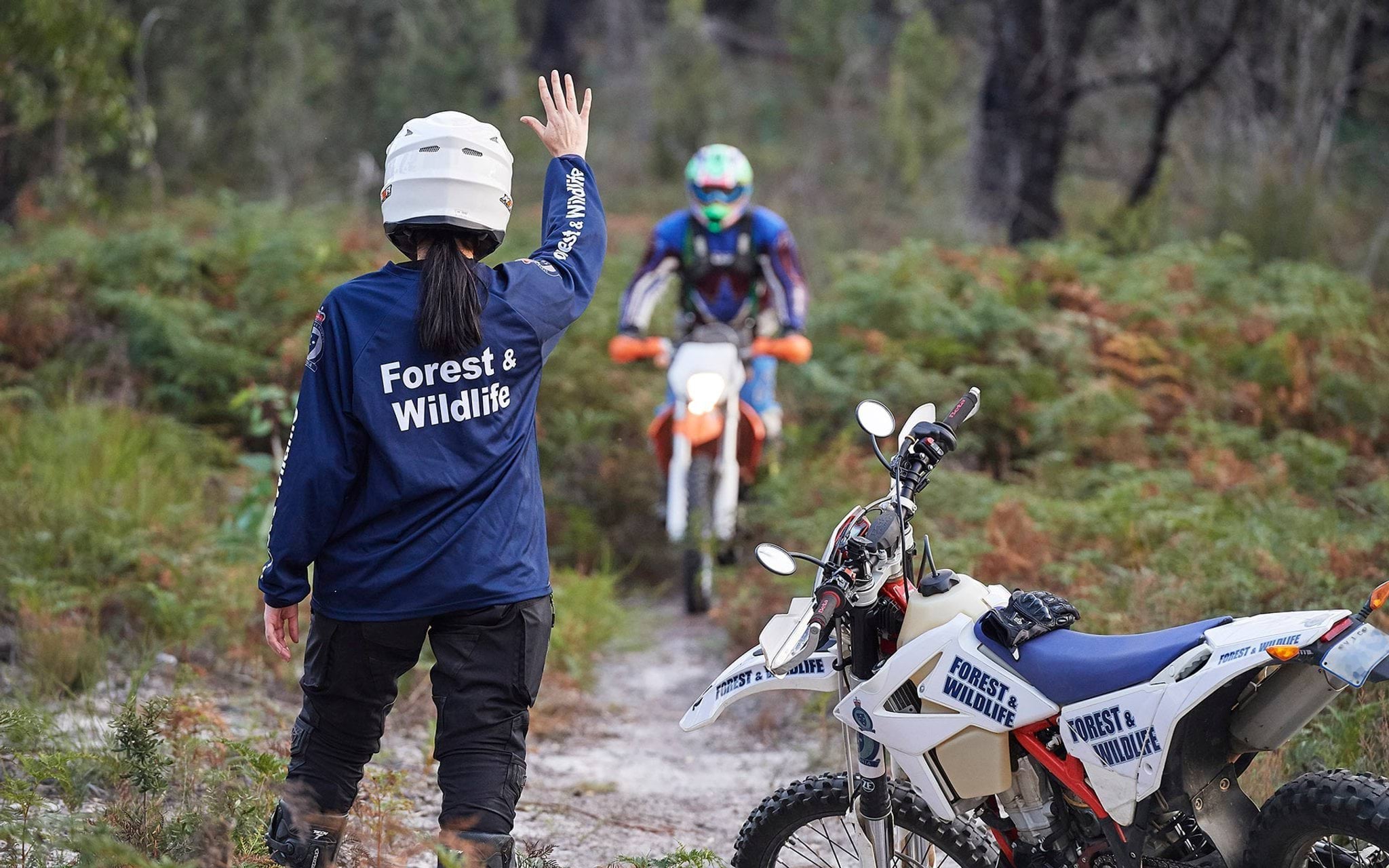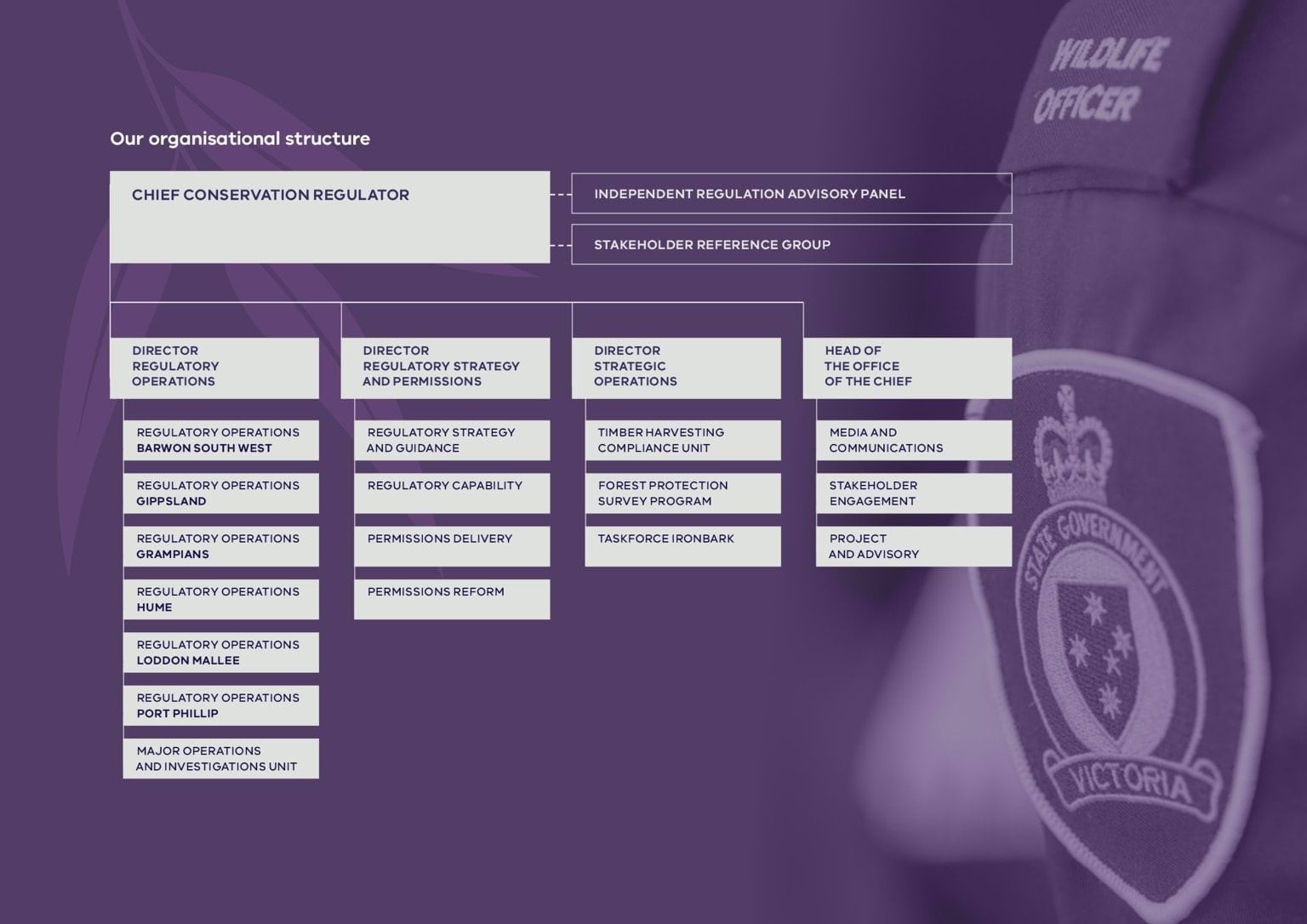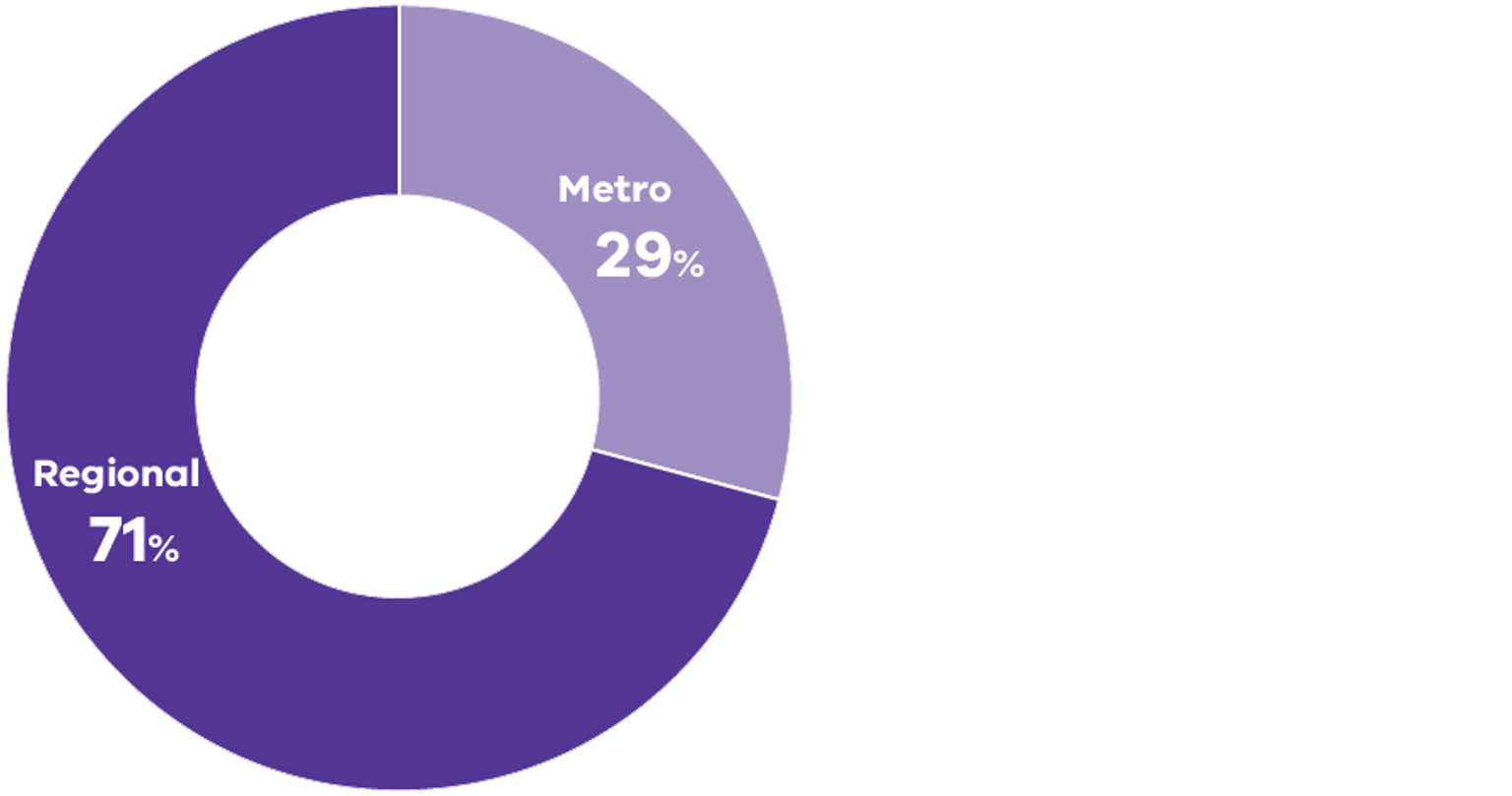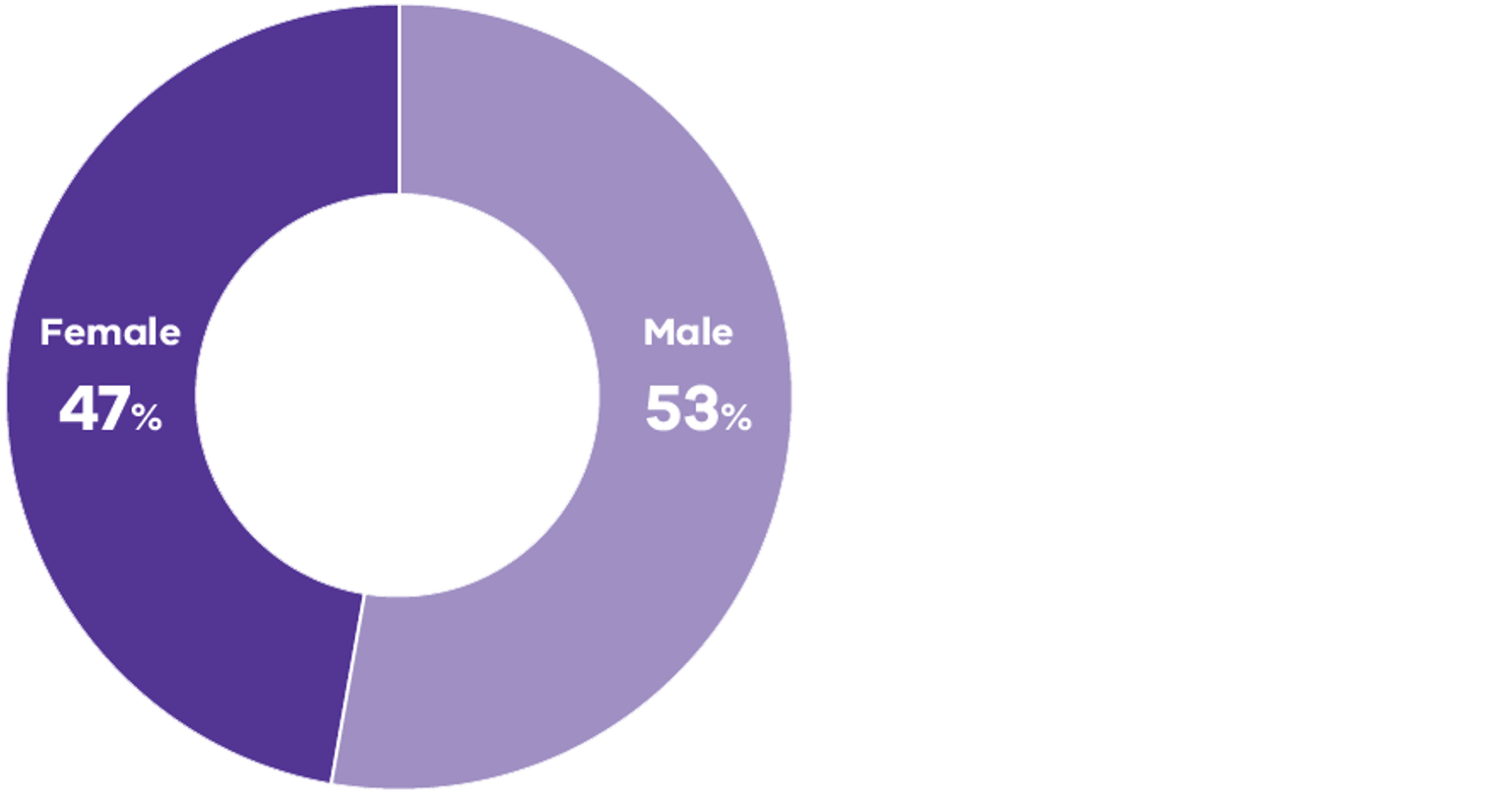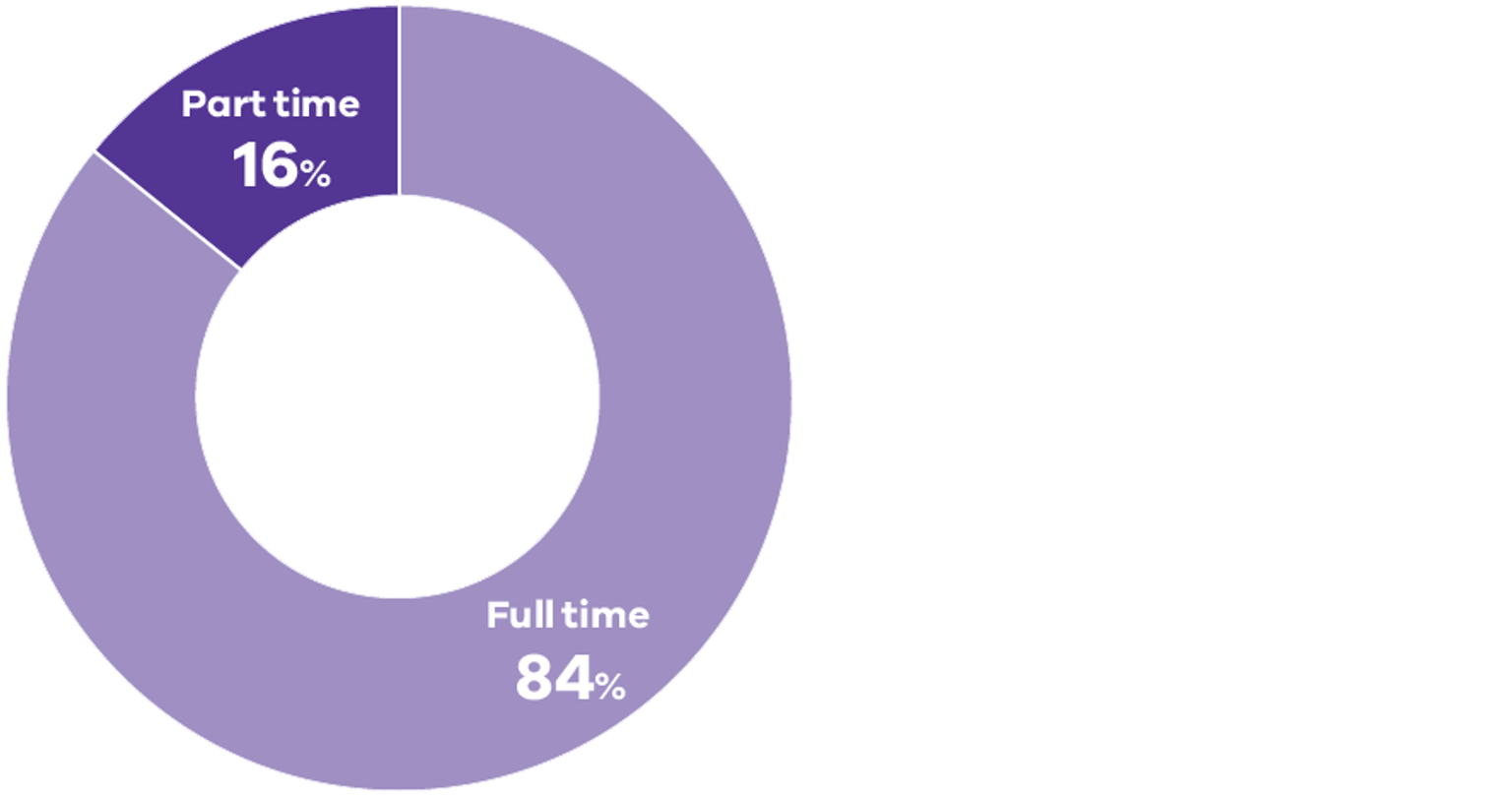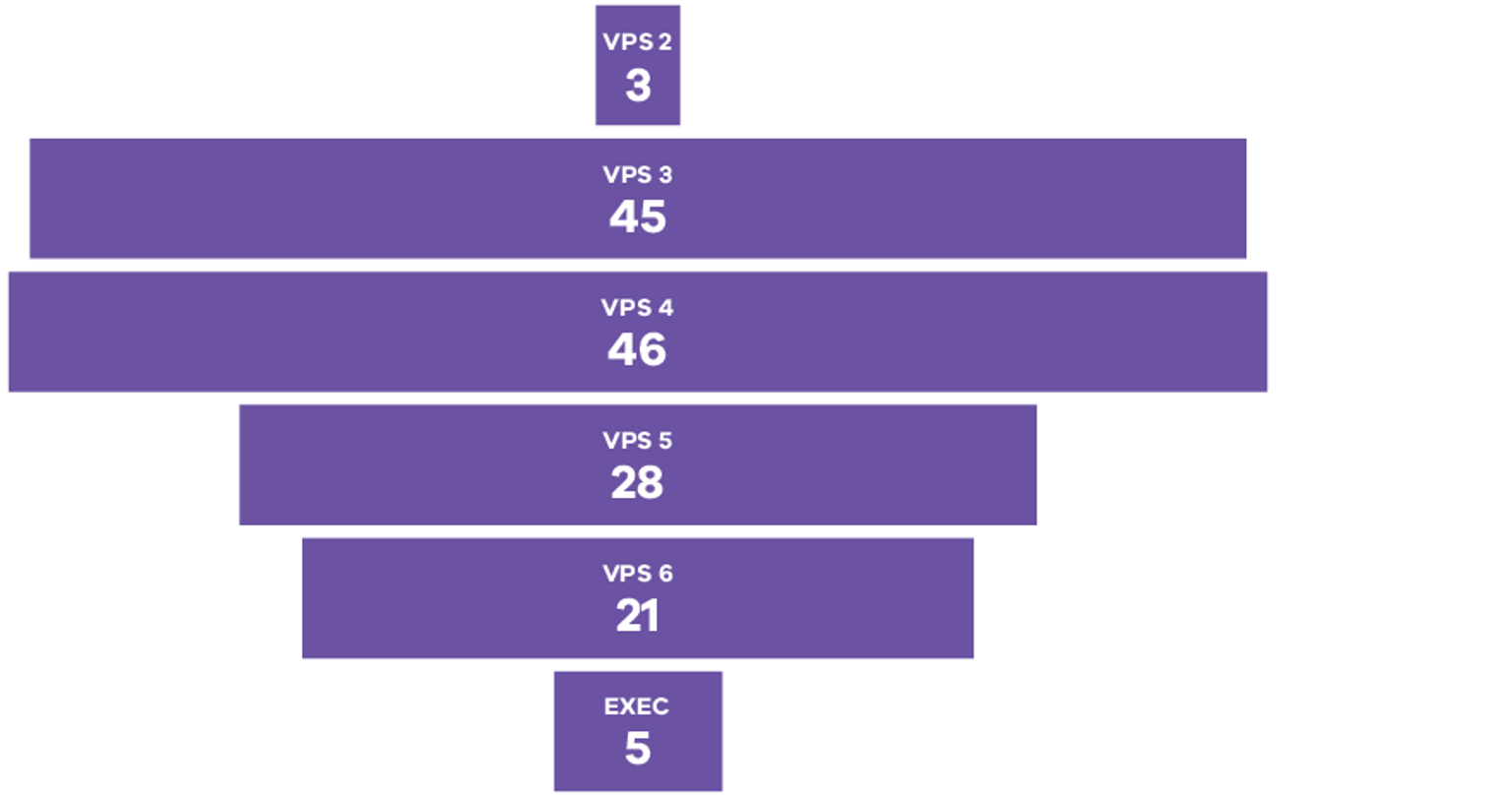Our Conservation Regulator Executive Leadership Team plays a pivotal role in guiding the governance of the Regulator. Supported by internal governance structures, the Executive Leadership Team provides advice and support that enables the Chief Conservation Regulator to fulfil the Chief’s responsibilities, and oversees the areas of strategy, finance, risk, people and culture, information systems and operational performance.
Our organisational structure
The Conservation Regulator is led by the Chief Conservation Regulator and is comprised of four business areas.
Regulatory Strategy and Permissions
The Regulatory Strategy and Permissions Branch leads the provision of regulatory strategy, information and guidance, and capability development. It undertakes reform and delivery of regulatory permissions (licences, permits and authorities). The branch works closely with the Regulatory Operations and Strategic Operations Branches to ensure its work can be effectively implemented and to support efficient, effective, and transparent regulatory service delivery.
Regulatory Operations
The Regulatory Operations branch leads and coordinates state-wide regulatory service delivery. Branch staff are responsible for conducting complex risk assessments, harm prevention campaigns, audits, inspections, investigations, and intelligence functions. The branch delivers strategic and effective risk-based and intelligence-led approaches to compliance for biodiversity, fire prevention, and use of public land through implementation of best practice frameworks, policies and supporting procedures and guidelines. The branch builds community confidence in the regulatory practices by implementing an open and transparent approach to information-sharing and decision-making, and by engaging with communities to inform how and where regulatory effort is targeted to address the greatest risks of environmental harm.
Strategic Operations
The Strategic Operations Branch oversees key operational activities relating to timber harvesting and delivers on the strategic priorities of the Conservation Regulator. This includes the Timber Harvesting Compliance Unit, Taskforce Ironbark and the Forest Protection Survey Program.
Office of the Chief
The Office of the Chief leads and delivers on strategic projects, issues management, reporting, media and communications, stakeholder engagement and partnerships, as well as coordinating business planning and culture development functions. The Office of the Chief works with other Conservation Regulator branches, the Office of the Deputy Secretary, DEECA’s regional and corporate media and communications units, and co-regulators to support our mission and regulatory obligations.
Chief Conservation Regulator
- Independent Regulation Advisory Panel (dotted line relationship)
- Stakeholder Reference Group (dotted line relationship)
- Director Regulatory Operations
- Regulatory Operations Barwon South West
- Regulatory Operations Gippsland
- Regulatory Operations Grampians
- Regulatory Operations Hume
- Regulatory Operations Loddon Mallee
- Regulatory Operations Port Phillip
- Major Operations and Investigations Unit
- Director Regulatory Strategy and Permissions
- Regulatory Strategy and Guidance
- Regulatory Capability
- Permissions Delivery
- Permissions Reform
- Director Strategic Operations
- Timber Harvesting Compliance Unit
- Forest Protection Survey Program
- Taskforce Ironbark
- Head of the Office of the Chief
- Media and Communications
- Stakeholder Engagement
- Project and Advisory
Our people
The Conservation Regulator considers that our people are our most valuable resource. We aim to support and empower staff to continue to build our regulatory capability and deliver on our regulatory mission. Operational staff conduct patrols for monitoring and educative activities they include Forest and Wildlife Officers and Authorised Officers, who have specialised training and are authorised to enforce relevant laws and regulations.
2023–2024 initiatives
Conservation Regulator Capability Framework
The roll out of the Conservation Regulator Capability Framework was used to determine strategic and individual learning needs. This Framework incorporated data covering the required skills, capabilities and knowledge for Conservation Regulator staff to do their job.
Regulatory Foundations Learning Program
The Regulatory Foundations Learning program, aimed at providing the same level of foundational understanding to all staff about our regulatory role and the context we operate within. This program, a suite of 14 eLearning modules was rolled out organisation wide.
Shadowing
A ‘shadowing’ program provides our people an opportunity to learn, share and gain insights from another person, team or area of the business, improving the sharing of ideas and knowledge across the regulator.
Learning and development programs
Design and delivery of a suite of learning and development programs, covering core mandatory training and fit for purpose initiatives such as search warrant and surveillance training.
Evolve
A bespoke leadership development program for our emerging leaders, focusing on enhancing skills in a management role. The program reflected on personal attributes and explored what makes good leaders, linking to the DEECA leadership model of working together, doing what matters and making a difference while maintaining a context of managing workload pressures.
Figures for staff with declared gender of self-described are not reported separately to protect individual privacy
Advisory groups
Independent Regulation Advisory Panel
The Conservation Regulator’s Independent Regulation Advisory Panel (IRAP) is chaired by the Chief Conservation Regulator, supported by three experts in the field of environmental regulation who work together to provide the Conservation Regulator with independent advice on best practice approaches to regulation. In 2023–2024, IRAP met four times and provided advice on:
- Emerging changes to best practice regulation
- Regulatory Foundations Program
- Developments in permissions reforms
- Conservation Regulator’s settings for regulatory policy and governance, and operational oversight
- Conservation Regulator’s Strategic Plan.
Stakeholder Reference Group
The Conservation Regulator’s Stakeholder Reference Group (SRG) provides advice and support to the Conservation Regulator to assist our mission of being an effective, trusted, best practice regulator for the Victorian community and environment. The SRG includes representatives from environmental non-government organisations, industry, local government and community organisations. During 2023–2024, the SRG met as a group four times, plus each member engaged with the Conservation Regulator on matters of individual interest.
In the past year, SRG has provided feedback and advice on:
- Engagement opportunities to connect with SRG members’ communities
- Supporting resources and guidance to help the public comply with legislation
- Developing our education and engagement approach
- Our role in working within a complex environmental regulatory landscape
- Developing our strategic approach to becoming a more mature regulator.
Updated
